
Contact:
11 Mount View
Billericay, Essex CM11 1HB
Alden Rose
ARCHITECTURAL DESIGN

Certified Passive House Consultant
Member of the International Passive House Association
Member of the Passivhaus Trust
enquiries@aldenrose.co.uk
+44 1277 651000
IPHA Membership
ID No. 65104
Copyright 2025 Alden Rose Ltd
Follow Us:



Alden Rose
ARCHITECTURAL DESIGN

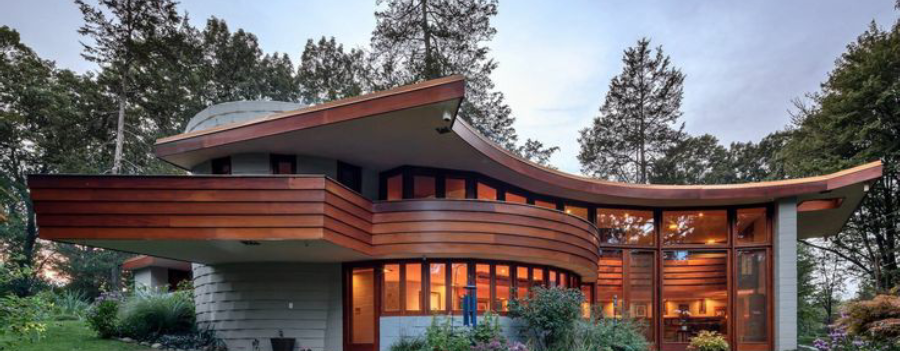
The New Era of House Design
What Is a Biosolar Roof, and Why Is It Smart?
A biosolar roof is a combination of two powerful technologies:
🌱 A green roof, planted with vegetation to help insulate the home, manage rainwater, and boost biodiversity.
☀ Solar panels that generate renewable electricity for the household.
When combined, these systems actually enhance each other: the plants keep the panels cooler, improving their efficiency, while the panels provide partial shade that supports plant health. It’s a highly effective, low-
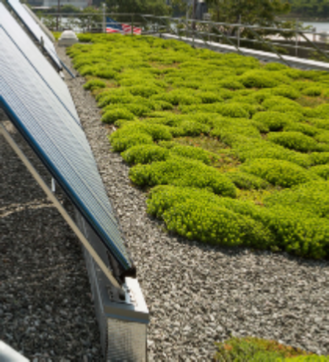
How Flat Roof Homes Are Changing the Game
Aside from the rooftop, flat roof homes bring a whole host of modern benefits:
- Clean, contemporary lines that offer a striking contrast to traditional homes
- Full-
height interiors without the awkward sloping ceilings of pitched roof designs - Large windows and open-
plan layouts, creating bright, breathable spaces - Easier integration of solar and green roof systems
- Potential for rooftop terraces or gardens, especially in urban areas
These homes reflect a new kind of living: one that’s light-

Is It Goodbye To the ‘British’ House?
Walk through any classic British neighbourhood and you’ll see the familiar charm: brick or rendered facades, steep-
Windows are largely small in relation to the wall area, and are fitted inline with the outer leaf of brick.
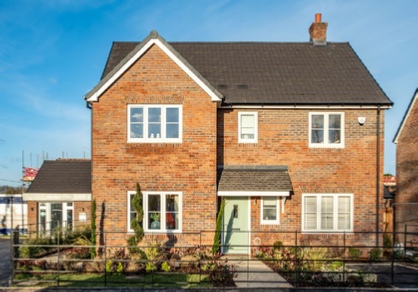
We design gables and dormers, and maybe a porch, but it is easy to spot a British house. Our roofing overhangs the outside walls by around 200mm with fascias and soffits holding the guttering at minimal distance.
Larger developments have typically had no consideration for orientation, architects often create sweeping street layouts with irregular plot shapes often ending in cul-
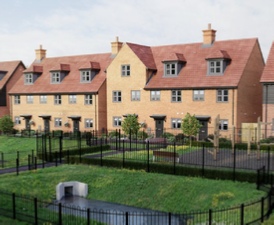
So what is wrong with this design?
In terms of Passive, there are numerous fundamentals that will hinder any successful retrofit of existing homes, and to continue with this detailing will create a large stock of homes that will never be truly passive. Here are just a couple of issues:
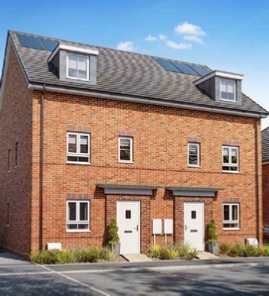
- Small windows do not maximise the solar gains available which can provide an incredible amount of free heat in the winter months
- Shallow eaves overhangs and gabled details do not provide any shading to the windows allowing the room to overheat in hot summer months
- Many homes cannot have the optimum level of solar panels as rooftops are not suitable reducing their ability to generate renewable energy
Design trends through recent extensions and renovations show the British public as wanting large full height windows and bifold doors to connect the inside and outside worlds, open-
Why Biosolar Rooftops Are the Future of British Housing
Look at any estate agent website around the world and you will see new home developments with smart and chic-
Make Way For Biosolar!

Fashion changes constantly—not just in our clothing, but in nearly every aspect of our lives. Technology and gadgets, car designs, hairstyles, language, and even fitness trends continuously evolve as do our lifestyle choices, eating Alfresco and meeting for a coffee.
Our global interconnectivity and the rise of social media have accelerated this cycle, allowing trends to spread instantly and widely.
What is considered stylish or relevant can shift in a matter of months, as we’re constantly exposed to new ideas, aesthetics, and cultural influences. In this fast-
Just like fashion in clothing, trends in house styles evolve over time, reflecting changes in culture, technology, and lifestyle. What was once considered cutting-
Ultimately, just as with clothing, house styles are a form of self-

Why Its Time to Rethink the Traditional British Home
While older homes have plenty of charm, they can be energy-
- Passive House principles
- Advanced insulation and ventilation
- Built-
in smart tech and renewables - Lower running costs and carbon footprints
This isn’t just a design trend—it’s a climate-
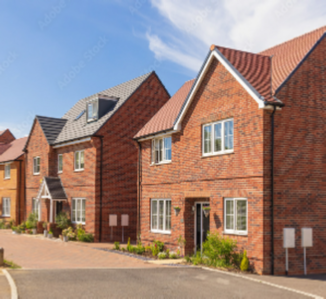
🌍
💡
🧘
📱

What’s Driving the Shift?
Sustainability: As the climate crisis grows, eco-
Innovation: Advances in materials and construction make flat roofs and biosolar tech more accessible.
Wellness: Natural light, biophilic design, and thermal comfort contribute to healthier homes.
Social Influence: Design blogs, Instagram, and Pinterest have made modern, minimalist homes more desirable.
A Truly Global Movement

With growing awareness of climate risk, cities are now integrating biophilia (green roofs and walls) into building codes, planning regulations, and public funding strategies. Innovations like biosolar roofs are expanding the potential of rooftops even further—creating spaces that are productive, beautiful, and sustainable.
Shifts in attitude to how we perceive the “typical house” are happening right now around the world.
From simple sedum mats (extensive roofs) to fully accessible gardens with trees and walkways (intensive roofs). Green roofs help to:
- Reduce urban heat (by cooling the microclimate)
- Improve air quality
- Manage stormwater (by absorbing rainfall)
- Boost biodiversity
- Extend roof life and improve building insulation
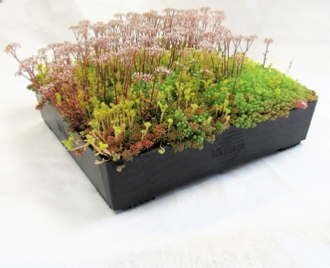
Global Cities Leading The Green Roof Movement
Berlin & Stuttgart, Germany
Germany was a pioneer in green roof policy. Stuttgart began incentivising green roofs in the 1980s. Today, Berlin offers subsidies and requires green roofs on many new developments. Green roofs are integrated with sustainable drainage systems (SuDS) and climate adaptation strategies.
Basel, Switzerland
Basel was the first city in the world to mandate green roofs on new flat-
Toronto, Canada
In 2009, Toronto became the first city in North America to pass a bylaw requiring green roofs on new buildings over a certain size. The city offers grants and maintains a Green Roof Bylaw to promote ecological design.
Copenhagen, Denmark
Copenhagen mandates green roofs on all new buildings with less than 30° roof pitch. It’s part of the city’s plan to become carbon-
Singapore
The city-
France
France introduced the new French Biodiversity Law in 2022 requiring all new commercial properties to install green or solar roofing nationwide. Since 2008, Paris has required green roofs on all new buildings and on renovations over 5000m2.

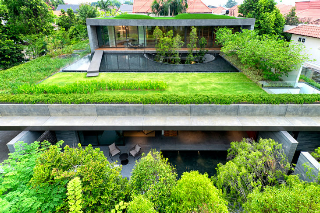
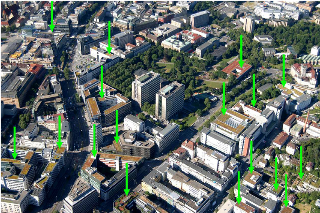
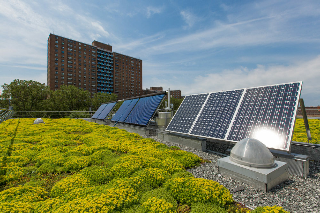
Is a green roof the way forward?
In our opinion -
Private Residence, Singapore
Stuttgart, Germany
Apartments in London
The Mid-Century Modern Revival
Mid-
Heavily influenced by the works of iconic architects such as Frank Lloyd Wright, Charles & Ray Eames, Eero Saarinen and Arne Jacobson, the original designs featured clean lines and minimal ornamentation, functional, open-
Using a mix of natural materials like wood and stone with modern ones like glass, steel and concrete, architects around the world are seeing this timeless style as the way forward in combatting climate change and meeting our modern lifestyles:
-
-
-
Housing our growing population largely means concreting over our open fields, so the simple, clean aesthetics fit perfectly into sustainability where the overall built profiles are lower than the traditional pitched roofs, preserving the openness and character of our communities. Combining sedum and solar creates the perfect recipe to meet the Passivhaus Standards, provide resilient buildings and improve everyone’s wellbeing.
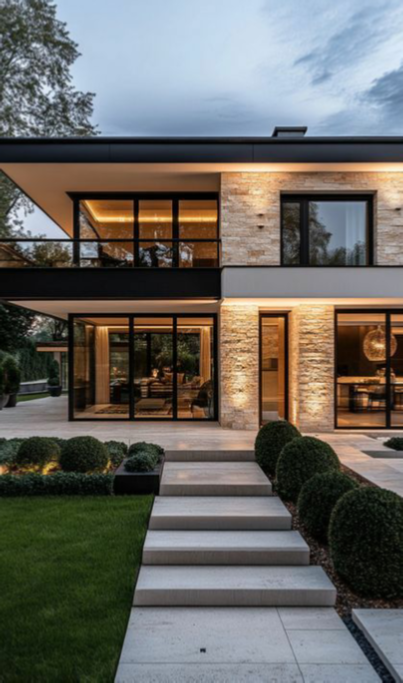
Why this timeless classic is taking the architectural world by storm